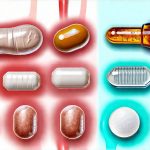Bladder instability, often manifesting as urgency, frequency, or even incontinence, can significantly impact quality of life. Many people instinctively associate bladder issues with aging, but lifestyle factors – particularly dietary choices – play a substantial role in both triggering and managing these conditions. While avoiding known bladder irritants like caffeine and acidic foods is frequently recommended, the importance of adequate hydration isn’t always emphasized as strongly. Often, individuals with bladder instability reduce their fluid intake fearing it will worsen symptoms, leading to concentrated urine which ironically increases irritation. This creates a vicious cycle that can be difficult to break.
This article explores how consciously choosing alcohol-free drinks – and specifically understanding the benefits of avoiding alcohol alongside selecting hydrating options – can contribute to improved bladder stability. It’s about moving beyond simply restricting fluids, but rather making informed choices about what you drink to support overall bladder health and function. We will delve into why alcohol impacts the bladder so negatively, how different non-alcoholic beverages offer varying levels of benefit, and practical strategies for incorporating these changes into your daily routine. Ultimately, it’s about empowering individuals with knowledge to proactively manage their bladder health through mindful hydration.
The Detrimental Effects of Alcohol on Bladder Function
Alcohol is a well-known diuretic, meaning it increases urine production by suppressing the release of vasopressin – a hormone that helps your kidneys retain water. This increased urine output can put extra stress on the bladder, leading to urgency and frequency. However, the effects go beyond just increased volume. Alcohol also has a direct impact on bladder control mechanisms. It impairs the neurological signals between the brain and the bladder, reducing the ability of the brain to effectively inhibit bladder contractions. Think of it as disrupting the communication necessary for your brain to tell your bladder when not to empty.
Furthermore, alcohol can weaken the urethral sphincter – the muscle responsible for keeping urine in the bladder. A weakened sphincter makes accidental leakage more likely, exacerbating incontinence symptoms. It’s not just the quantity of alcohol consumed that matters; the type of alcoholic beverage also plays a role. Carbonated alcoholic drinks, like beer and sparkling wine, can further irritate the bladder due to their effervescence. Darker liquors have been shown to contain higher levels of congeners – chemical byproducts of fermentation – which some research suggests may contribute to increased urgency.
Crucially, it’s important to understand that eliminating or significantly reducing alcohol consumption isn’t about ‘punishing’ yourself; it’s about proactively supporting your bladder health. Even moderate alcohol intake can disrupt these delicate processes and worsen symptoms for individuals prone to bladder instability. Shifting towards alcohol-free alternatives allows you to enjoy social occasions without compromising your bladder function.
Hydration Strategies for Bladder Stability: Beyond Water
While water remains the gold standard for hydration, simply drinking more water isn’t always enough – especially if you struggle with urgency. The timing and type of fluids matter significantly. Spreading fluid intake evenly throughout the day is preferable to gulping large amounts at once, which can overwhelm the bladder. Aim for small, frequent sips rather than infrequent large drinks.
Beyond plain water, several alcohol-free beverages offer hydration benefits without being known bladder irritants. Herbal teas (avoiding those with caffeine or diuretic herbs), diluted fruit juices (particularly cranberry – though its effect is debated and should be monitored individually), and coconut water are all good options. Smoothies made with hydrating fruits like watermelon and cucumber can also contribute to fluid intake. However, it’s vital to read labels carefully; some seemingly healthy beverages contain hidden bladder irritants or artificial sweeteners that can worsen symptoms. Consider exploring lower sugar drink options for optimal support.
The ideal hydration strategy is personalized. Experimenting with different fluids and monitoring your body’s response is key. Keeping a “bladder diary” – recording what you drink, when, and any associated symptoms – can help identify triggers and tailor your hydration plan to your specific needs. Remember: staying adequately hydrated supports optimal bladder function and helps dilute urine, reducing irritation.
Understanding the Role of Cranberry Juice
Cranberry juice has long been touted as a remedy for urinary tract infections (UTIs), and some believe it also benefits bladder stability. The theory is that compounds in cranberries – specifically A-type proanthocyanidins (PACs) – can prevent bacteria from adhering to the walls of the urinary tract, thus reducing UTI risk. However, the link between cranberry juice and bladder stability itself is more complex.
While it may help prevent UTIs which can contribute to urgency and frequency, cranberry juice’s high acidity can actually be irritating for some individuals with overactive bladders. This creates a paradox: it potentially prevents infection but could simultaneously worsen symptoms. It’s essential to monitor your own reaction if you choose to incorporate cranberry juice into your diet. Start with small amounts of diluted, unsweetened cranberry juice and observe any changes in your symptoms. If it exacerbates urgency or burning sensations, discontinue use.
Furthermore, many commercially available cranberry juices contain added sugar, which is generally not recommended for bladder health. Look for 100% cranberry juice without added sugars or consider using cranberry extract supplements as an alternative source of PACs – though even these should be used cautiously and monitored for individual tolerance. There’s no one-size-fits-all answer with cranberry juice; it’s about individual response. For more information on understanding bladder infections, review identifying potential issues and seeking professional advice.
The Impact of Artificial Sweeteners
Artificial sweeteners are often marketed as a healthier alternative to sugar, but their impact on bladder health is increasingly being scrutinized. Some individuals find that artificial sweeteners – particularly aspartame, saccharin, and sucralose – can irritate the bladder, leading to increased urgency and frequency. This is thought to be due to their potential to disrupt the gut microbiome or directly affect nerve pathways involved in bladder control.
The sensitivity to artificial sweeteners varies significantly from person to person. Some individuals may experience no adverse effects, while others find them highly irritating. If you suspect that artificial sweeteners are contributing to your bladder symptoms, try eliminating them from your diet for a period of time and observe whether there’s an improvement.
Be vigilant about reading food labels. Artificial sweeteners are often hidden in seemingly innocuous products like diet sodas, sugar-free candies, and even some yogurts. Choosing natural alternatives, such as stevia (in moderation), or simply reducing overall sweetness can be beneficial. Again, the “bladder diary” approach is invaluable for identifying potential triggers. You may also find it helpful to understand general dietary guidelines.
Developing a Personalized Hydration Plan
Creating a personalized hydration plan requires careful self-assessment and observation. Here’s a step-by-step approach:
- Keep a Bladder Diary: For at least three days (or longer), meticulously record everything you drink, the time of day, and any associated bladder symptoms.
- Identify Potential Triggers: Analyze your diary to pinpoint beverages that consistently worsen your symptoms. This might include alcohol, caffeine, acidic drinks, or even artificial sweeteners.
- Experiment with Alternatives: Gradually replace potential triggers with alcohol-free alternatives like water, herbal teas, and diluted fruit juices.
- Monitor Your Response: Continue keeping a bladder diary to track how your symptoms change as you modify your fluid intake.
- Adjust as Needed: Your hydration plan isn’t static; it should evolve based on your individual needs and responses.
Remember that consistency is key. Maintaining a regular hydration schedule – spreading fluids evenly throughout the day – will support optimal bladder function. It’s also important to note that these strategies are meant to complement, not replace, any medical advice or treatment you receive from a healthcare professional. If you’re experiencing persistent bladder issues, seeking guidance from a doctor is essential. Furthermore, learning about proper bladder resting techniques can be beneficial.
Consider how reducing stress levels might also contribute to improved bladder function and overall wellbeing, as these factors are often interconnected. For those seeking proactive strategies, exploring gentle yoga practices can be a supportive approach.
Finally, remember that understanding your body’s unique responses is key to effective bladder management and proper rehydration strategies are essential for long-term health.





















